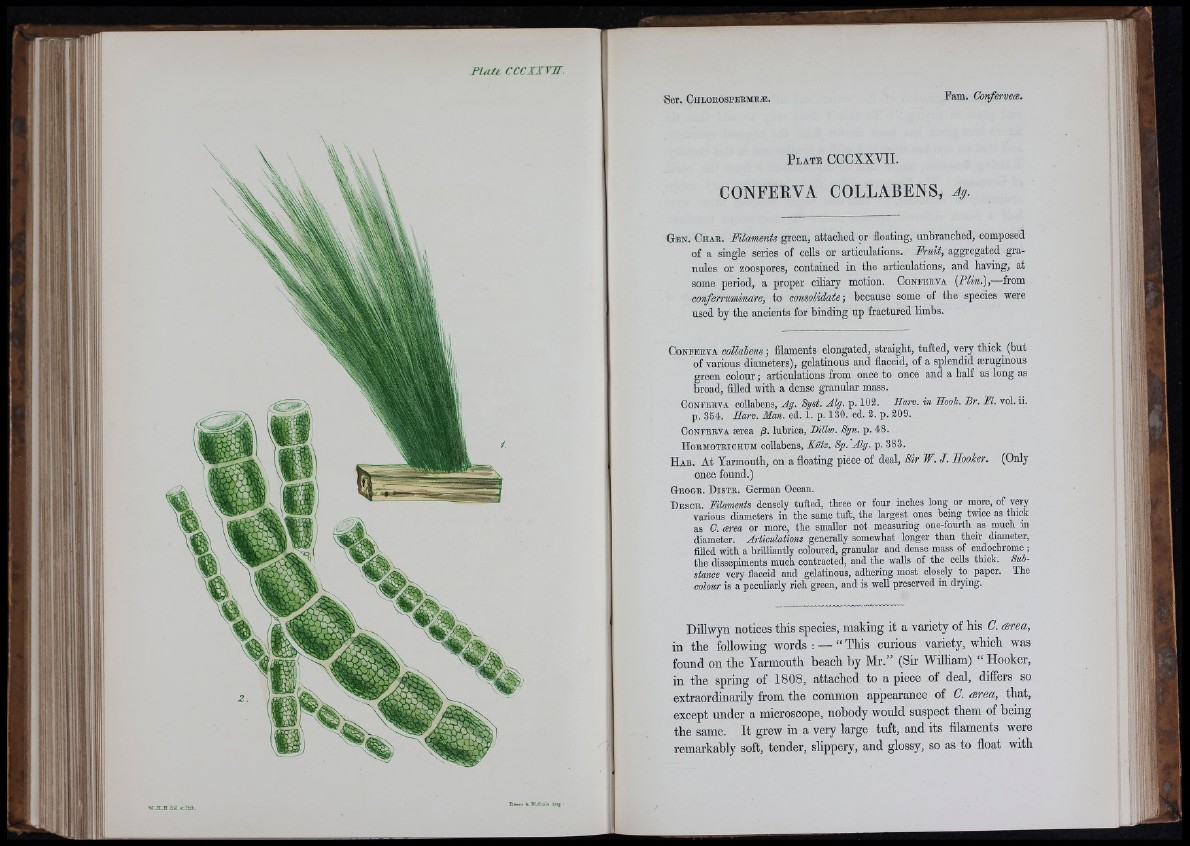
Hait c c cxm r.
a,t.». fc Niekol« Unf .
P l a t e CCCXXVII.
CONFERVA COLLABENS, Ag.
G en . C hak. MlamenU green, attached or floating, unbranched, composed
of a single series of cells or articulations. F ru it, aggregated granules
or zoospores, contained in the articulations, and having, at
some period, a proper ciliary motion. C onpbkva (P fm .),—-from
confetruminare, to consolidate \ because some of th e species were
used by th e ancients for binding up fractured limbs.
CoNEEKVA collabens ; filaments elongated, straight, tufted, very thick (but
of various diameters), gelatinous and flaccid, of a splendid gcruginous
green colour ; articulations from once to once and a half as long as
broad, filled with a dense granular mass.
CoNPEKVA collabens, Ag. Syst. Alg. p. 102. Harv. in Hook. Br. FI. v o l. ii.
p. 354. Harv. Man. ed. 1. p. 130. ed. 2. p. 209.
CoNEEEVA ærea /3. lubrica, Dillw. Syn. p. 48.
H oemoteichum collabens, Katz. Sp. Alg. p. 383.
H a b . A t Yarmouth, on a floating piece of deal. S ir W. J . Hooker. (Only
once found.)
G e o g e . D i s t e . German Ocean.
D e s o e . Filaments densely tufted, three or four inches long or more, of very
various diameters in the same tuft, the largest ones being twice as thick
as 0. ærea or more, the smaller not measuring one-fourth as much in
diameter. Articulations generaUy somewhat longer than their diameter,
fiUed with a brilUantly coloured, granular and dense mass of endochrome ;
the dissepiments much contracted, and the waUs of the ceUs thick. Substance
very flaccid and gelatinous, adhering most closely to paper. The
colour is a peculiarly rich green, and is weU preserved in drying.
Dillwyn notices this species, making it a variety of his C. mrea,
in the following words: — “ This curious variety, which was
found on the Yarmouth beach by Mr.” (Sir William) “ Hooker,
in the spring of 1808, attached to a piece of deal, differs so
extraordinarily from the common appearance of C. area, that,
except under a microscope, nobody would suspect them of being
the same. It grew in a very large tuft, and its filaments were
remarkably soft, tender, slippery, and glossy, so as to float with
; is